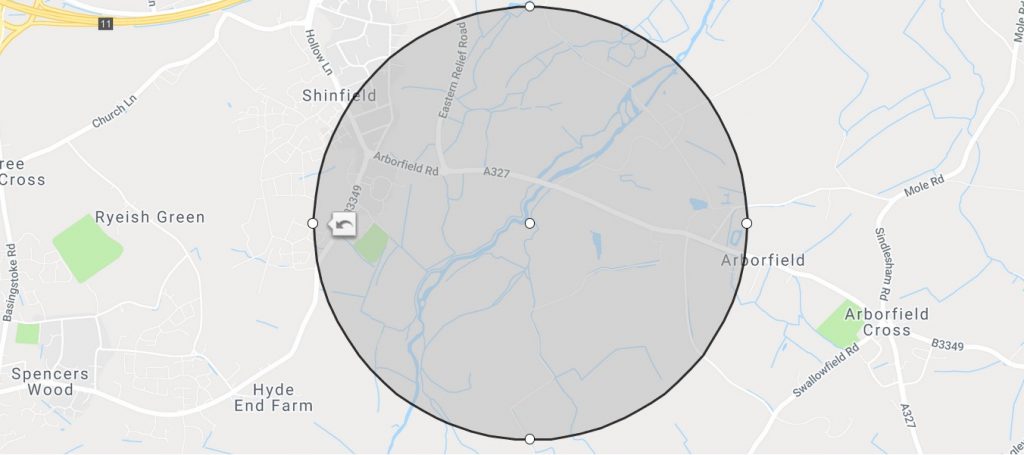The article “Why Gamble with people’s Health?” by Richard R highlighted the dangers of silica dust pollution from quarrying sites. In this article, we take a look at how this pollution may affect the local area if Cemex are granted permission to proceed.
The map below shows the Western edge of the extraction site. I’ve superimposed a circle showing the 1km radius from the quarry; in the previous article, this is the distance that silica dust of up to 10 μm in size can travel from a quarry site.

As you can see, this includes both primary schools in Shinfield, and many residential areas; those closest to the source would be at most risk from silica dust, but even outside of the 1km area there would be an increased risk.
The Cemex application in Shinfield is not just for a quarry: It also includes a ready mix cement facility. There are many risks with this process, and they will add to the pollution impact. One of these is called “trackout”:
Trackout is a serious problem for ready mix plants. Many ready mix plants wash their trucks and vehicles on site. Then, the wash water forms pools and mud. Concrete mixer trucks, aggregate delivery trucks, and other vehicles pick up the mud on their wheels. The mud is carried or “tracked” out of the plant and deposited onto nearby roads. The mud dries out and then becomes airborne when other vehicles drive over it.
No doubt Cemex will claim that they have strict cleansing procedures in place in order to prevent trackout, but no process is failsafe, and the industry is largely self-regulating with operators required only to notify relevant authorities when a breach has occurred. Even when a council is closely monitoring a site, pollution can occur over a long period before being identified as this article shows:
https://www.ealing.gov.uk/news/article/1424/hanson_concrete_slammed_with_110000_fine
In the case above, the breach was only discovered due to the council’s own monitoring equipment; will Wokingham Borough Council be paying for such monitors, or will Cemex be paying? Of course, the fine itself is a tiny amount to a firm the size of Cemex, so there is no motivation for them to implement expensive safety measures when they cost more than the fine for not adhering to regulations. The cost to residents’ health is, however, incalculable.
Article by Marcus M